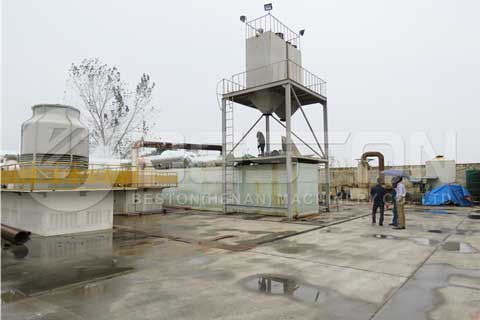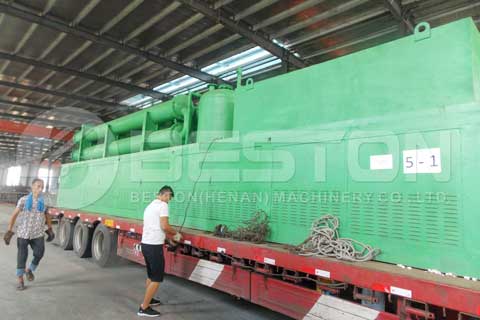Tire to oil pyrolysis machines are used to transform conventionally non-recyclable scrap tire waste into fuel oil, carbon black, steel wire and combustible gas. All the products just listed are profitable commodities in the global markets, which means tire recycling with pyrolysis technologies can be very lucrative. The fuel oil produced, for instance, can be used in its raw state to power all types of heavy industry machinery. Alternatively, it can be refined into more mainstream fuels like gasoline and diesel oil with distillation machines.

Beston Continuous Tyre Pyrolysis Plant for Sale
There are many different types of tire pyrolysis plants for sale online as the rubber recycling sector is growing. A core reason for the growing demand for rubber recycling machines is that more countries are promoting eco-friendly/green practices with many offering significant subsidies to businesses in the field. The reality is that sending scrap tires to sea fills, incinerators and landfills causes a lot of damage to the environment. In contrast, rubber pyrolysis reactors emit no toxic fumes.
The reason why Beston’s continuous tyre pyrolysis plant emits no toxic smoke during operation is that they are equipped with the latest dedusting systems. These systems use water washing, activated carbon adsorption cleaning, and ceramic ring adsorption technologies to ensure no toxic emissions are output. Due to the extra-strict EU emissions regulations, customers from Europe should choose rubber pyrolysis plants featuring activated carbon absorption towers to ensure they compile with the emissions restrictions.

Tyre Pyrolysis Plant Shipped to Romania
Beston’s continuous tire pyrolysis plants also used heat reutilization designs to make them more energy-efficient and thus less costly to run. Such designs mean that combustible gas generated during rubber pyrolysis is used to reheat the main reactor furnace. Since in effect a self-perpetuating process is set up, the fuel costs of operating a continuous rubber pyrolysis plant are kept to a minimum. Keep in mind that reactor furnaces can be fueled using a wide range of fuels, including biogas, coal, natural gas, oil and more.
Some of the main differences between different types of tire pyrolysis plants include the reactor configurations and plant automation levels. Semi-continuous tire pyrolysis plant, for instance, tend to have rotary reactors, whereas fully continuous tire recycling machines have fixed (horizontal) reactors. The benefit of horizontal reactor patterns is increased stability and better energy efficiency. Fully continuous pyrolysis plants are designed to operate round-the-clock with no need for a large manual labor force thanks to automatic feeders and automatic dischargers.
Those looking to process several hundred tons of tire waste each week are likely to see fully continuous tire to oil machines as a better investment choice. After all, some of the top-line machines in that category can process over 30 tons of rubber waste each day. When you think that 1 ton of tires contains approximately 550 kg of fuel oil, you can start to get an idea as to the scale of the profits that can be generated from effective tire to oil machines. To learn more about the best rubber pyrolysis plants for your tire recycling business, be sure to check out Beston’s official website: https://bestonmalaysia.com/.